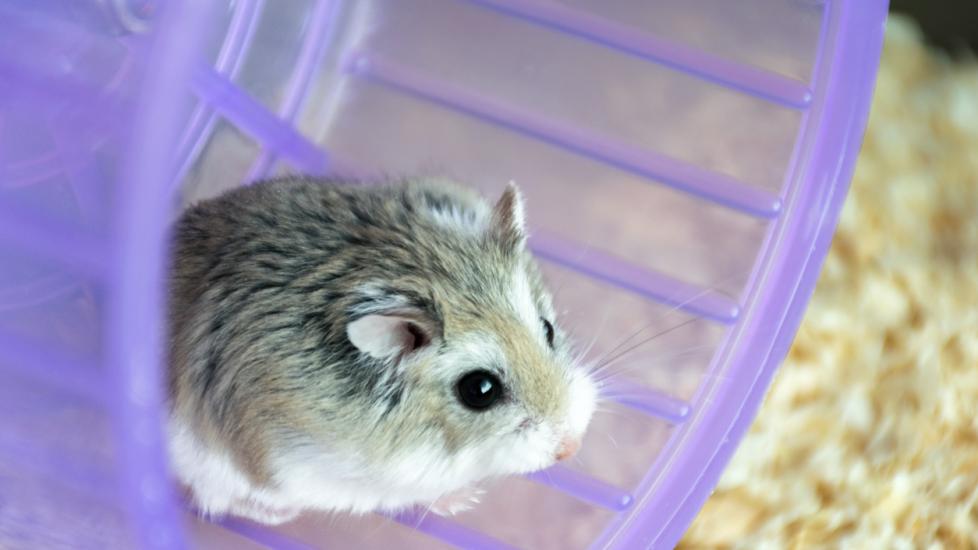Hamster Wheels
It is very important to provide environmental enrichment for your hamster to keep them mentally stimulated, happy, and healthy. An exercise wheel can make a great addition to any hamster habitat.
Why Do Hamsters Run On Wheels?
In their natural environment, hamsters live in elaborate underground burrowing systems, constantly scurrying from one end to another. Exercise wheels help provide domesticated hamsters with aerobic activity to mimic this behavior. Some hamsters will run up to five miles a night on their exercise wheels.
Providing the proper environmental enrichment for your hamster can help prevent:
-
Anxiety
-
Obesity
-
Restlessness
Hamster Wheel Size
It is important to choose an exercise wheel relative to your hamster’s body size. Generally, a good rule of thumb is to provide a wheel at least 6 inches in diameter for dwarf hamsters, and at least 8 inches in diameter for Syrian or normal-sized hamsters.
A mis proportioned wheel will cause a hamster to bend their back at an unnatural angle. Hamsters provided with running wheels that are too small are susceptible to injuries.
Types of Hamster Wheels
There are a few varieties to consider when choosing the right exercise wheel for your hamster. Some wheels are safer for hamsters than others, and some are easier to clean and may be quieter. Options include:
-
Kaytee Comfort Wheel: made of plastic with ridges for grip
-
Ware Flying Saucer: silent, easy-to-clean plastic with ridges for grip
-
Exotic Nutrition Silent Runner: textured surface, silent, plastic
-
Kaytee CritterTrail Snap-on Wheel: connects directly to the cage
-
Ware Metal Tread Wheel: durable, affordable, but can injure a hamster’s feet
Homemade hamster wheels can be crafted out of cardboard, plastic, and wood. There are plenty of DIY hamster wheel tutorials available if you want to create your own.
Choosing the Best Hamster Wheel
In addition to providing the correct size wheel for your hamster, it's essential to choose the appropriate constructive material. Wheel surfaces should not be too smooth as to provide enough grip, but also not too rough to damage a hamster’s footpads.
Any surface can cause footpad lesions if your hamster runs excessively, so it's essential to provide a varied environment for exercise in addition to their wheel enrichment.
Wheels featuring open metal slots are not recommended because hamster feet can easily become stuck and cause injury.
Metal wheels with mesh overlay are an acceptable option, but closely monitor your hamster for any foot lesions—excessive running on this type of wheel can cause footpad injuries.
Plastic wheels with small ridges or a textured surface have been shown to cause the least injuries.
References
-
Beaulieu A, Reebs SG. Effects of bedding material and running wheel surface on paw wounds in male and female Syrian hamsters. Laboratory Animals. 2009.
-
Scherbarth F, Rozman J, Klingenspor M, Brabant G, Steinlechner S. Wheel running affects seasonal acclimatization of physiological and morphological traits in the Djungarian hamster (Phodopus sungorus). American Journal of Physiology-Regulatory, Integrative and Comparative Physiology. 2007.
-
Yeates J, Universities Federation For Animal Welfare. Companion Animal Care and Welfare: The UFAW Companion Animal Handbook. John Wiley & Sons, Inc. 2019.
-
van Lunteren P, Groenewold MA, Pozsgai G, Sarvary J. Does voluntary wheel running exist in Neotropical wild mammals? acta ethologica. 2021.
Featured Image: iStock.com/Anyarnia
